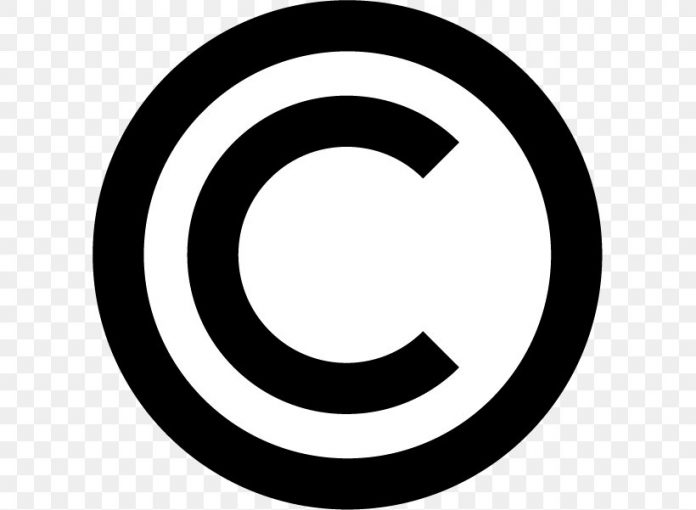This article is written by Anshal Dhiman. The article talks about the issues related to posting of paparazzi photos on social media without the creator’s consent.
Table of Contents
Introduction
Suppose you are out with your friends at a special place with a lovely background, and you yourself are looking nothing less than Tom Cruise or Jennifer Aniston, which will surely give you your desired photographs and considering you have a friend who can actually click good photos which you can upload on social media to get some attention from other people of your age. When you post these photos on social media, you don’t worry about facing any lawsuit or having infringed anyone’s rights by posting that photo, unless your photographer friend is a law student and is not one to be messed with. The same is not the case with celebrities.
For the paparazzi, whose job is to click photos of the celebrities, a photograph is like a painting. A painter has his rights over his painting and no one can just post the painting and receive money or credit for it without facing a lawsuit from the original creator. There are usually two sets of rights involved in photography, one of the subjects (models in this case) in the photograph, and ownership rights of the photographer who has clicked the photo.
Many celebrities have faced lawsuits themselves for posting their photos without having any prior agreement with the photographer to do so, and at the same time, these celebrities have also sued other people for posting their photos on the internet without giving credit or without prior consent.
The generally accepted answer or solution to this is that celebrities or anyone who wants to repost any such photos must have a prior agreement with the photographer i.e. the owner of the photograph to get their permission to post the photographer, which will probably involve monetary compensation as it is believed that by reposting photographs from other accounts and the work of the photographer is made easily available to other and he misses out on his opportunities for future work.
Photograph copyrights
Most countries have covered photographs under copyright laws. In India, photographs are covered under Section 2(c) of The Copyright Act, 1957 as artistic work. The quality of the photo is immaterial to the question if a photograph can be registered as a copyright. No matter how blurry or badly clicked a photo might be, it can still be registered as a copyright.
It is also important to know that the original owner of the copyright of a photograph is the creator of the photograph. So if someone clicks a photo from someone else’s camera, the owner of the photograph will be the one who clicked the photo and not the one who owns the camera from which the photograph was clicked. Indian Copyright Act provides protection for 60 years from the date of creation in the case of photographs. So if I click photographs of a celebrity today, no one else can upload them on social media without my consent or else they will face consequences in the form of a lawsuit.
Photography, especially paparazzi photography, has not been under the scrutiny of law very often. This can be attributed to the technological developments in the last decade or so. Earlier, photographs could not be just clicked by everyone and neither did everyone own a camera or a mobile phone which could click photos. So paparazzi photos were the only source of celebrity photos for the public and the paparazzi could sell their photographs to media companies who would publish them in their magazines or TV.
But with the evolution of cameras, social media and digital photography, uploading photos on the internet has become very normal and people have avoided going to courts for such cases because of the time taking procedure. However, arbitration has come in handy in these cases as both the parties can settle out the issues pertaining to their rights as far as a photograph is concerned, between the celebrity who is the subject of the photo and the photographer who might be independent or working for any photography agency.
Celebrities who have been involved in lawsuits with paparazzi
LeBron James
LeBron James, an American basketball player, was served with a lawsuit by a photographer named Steven Mitchell, who claimed that the player had uploaded a photo on social media that was owned by him. In the photograph, Lebron James is seen dunking a basketball in the middle of a match. LeBron James alleged that the photographer was trying to use the photograph to use his financial advantage without his consent, thus violating his rights of publicity under common law. The case was eventually settled between the photographer and the player. The details of the case can be read here.
Jennifer Lopez
Everyone knows Jennifer Lopez. She got herself in trouble in 2018 when she uploaded a photo of herself, without giving credits to the photographer who had clicked. The photographer sued the actress/singer claiming that he had clicked the photo a year before and Jennifer Lopez and her team, which was also involved in the decision to upload the said photo on social media. In the end, this case was also settled between the photographer and the actress where both parties agreed to a monetary compensation.
Emily Ratajkowski
This particular is pretty different from those we have read so far. In this case, the American model/actress Emily Ratajkowski uploaded a photo of her holding flowers and wrote in the caption “MOOD FOREVER”. The photographer who had clicked this photo, Robert O’Neill, filed a lawsuit against her claiming that the photo was his creation and that she has violated his copyrights.
In response to the claims made by the photographer, Emily Ratajkowski said that the photographer did not hold any rights over the photo and that the uploading of the photo was fair use of the photo. It was alleged by the actress that the photographer parks everyday somewhere around her house and tries to click her photos without her consent, which he would then further sell to third party agencies for his financial gains, and it was also claimed that this is the result of regular harassing and aggressive abuse of power by the paparazzi who are ready to cross limits to click photos of her even while doing minimal jobs, in this case, buying flowers for her friend.
The case although is not settled yet, it is possible this case may also end in a settlement, but it is not sure who will have to settle and which party will be made liable to give monetary compensation.
In the above cases, it is observed how the photographers value their rights and have stood up against the celebrities who have violated their rights by posting their photos on social media. This section won’t include any more cases in it as the author believes that the cases mentioned above are sufficient examples as to what are implications when a celebrity or a non-celebrity for that matter uploads a photo to which he doesn’t have rights, and doesn’t have any prior agreement or consent of the photographer who holds the rights over that particular photo.
The cases cited have ended up in settlements or will most probably end up in settlements, but that is only because of the financial superiority of the parties involved in the matters.
In cases where the parties are not so much financially superior, it will be interesting to see how the courts would rule in those situations. Indian courts in particular have realized photographs as part of Section 2 (c) of the Copyright Act and have acted in accordance with it in matters where the question is whether a person who is not the owner of a photograph can upload such photographs.
It will be interesting to see how the courts will evolve in adjudicating such matter in coming time as there are more and more developments in digital photography and the matter in general has been normalized by the public, also considering the fact that the Copyright Act was enacted in 1957, which more than 60 years from now. It is an interesting question if amendments are actually sufficient to help the law keep up with modern trends, in this case, focusing especially on paparazzi photography and rights of both the model and photographer
Suggestions
Prima Facie, it can be noticed that the problems discussed in this article are not really as complex as they have been made. Many celebrities and non-celebrities have posted photos on social media which they randomly found on the internet, and had to face lawsuits as a consequence. A simple answer that people would suggest to stay away from such troubles is that don’t upload any photos on social media that you do not own. But since many people do not really try to stick to the generally accepted norms and solutions, this Section will provide some extra suggestions which might be useful for those who want to avoid any such troubles any time in the near future.
Licensing is an important part of any issues related to copyrights. A non-exclusive license can be made either verbally or in writing while an implied license may be implied by the actions of the parties. In such cases, parties can claim that the other party, through their actions, demonstrated that there is an intention to grant the license to use the photos. This can also be used as a defence in cases where it has been alleged that a party has infringed someone’s copyrights by using a particular photo to which it alleged that the infringing party had no license.
Co-authorship is another issue that has arisen out of the debates regarding the subject matter of this article. In a photograph, there are two sets of rights, one of the subject and one of the photographers. But in the above cases it is seen that the photographer enjoys majority rights and the models i.e. the celebrities in the photos in this case, are the right infringers when they upload a photo that contains the subject itself in it.
This is a controversial issue since there must be joint rights over the photograph. Another question that arises out of the same issue is the copyrightability of the poses which have been made by the subject in the photograph, as in a direct or indirect way it is an Intellectual Property of the model. Although this seems like a photo for the victims to fight as the courts in the USA have declined to provide any protections to yoga poses or poses which are used by companies from an influential person, for e.g. Michael Jordan flying dunk used by Nike.
In both, the situations mentioned the US courts have recognized only the photographer’s rights. Indian courts until now have not have had much work regarding these issues since most of such issues are dealt with outside the court through the medium of arbitration.
An easy way for celebrities to avoid such troubles is to hire their own photographers and upload only such photos to which they have complete rights, and they can come into agreements with others who want to use such photos for their use. This is useful as celebrities cannot claim the defence of fair use when they are using photos from the paparazzi for promotional reasons.
Conclusion
We observe from the article the various troubles that people may find themselves in when they post photos on social media without the prior consent of the creator of such a photograph. The issue at first seems very normal and a reader may even wonder how people can land themselves in this trouble. But when paparazzi and celebrities are involved the issue becomes complicated, due to the stature of the celebrities in the public and the clash of rights between the celebrities, the photographer, and other non-related people who may use any such photographs. Most such cases have ended as settlements, and will probably continue to do so due to the complexity of the issue and the lack of proper legislation related to the topic properly.
References
- https://www.ipwatchdog.com/2019/10/30/keeping-copyright-infringement-copyright-celebrities-paparazzi-social-media/id=115456/
- https://copyright.gov.in/Documents/CopyrightRules1957.pdf
- https://www.buzzfeednews.com/article/claudiarosenbaum/celebrities-sued-paparazzi-photos-social-media
- https://www.jdsupra.com/legalnews/social-media-posting-copyright-71845/
- https://www.researchgate.net/publication/263566213_Taking_the_extra_out_of_the_extraordinary_Paparazzi_photography_as_a_celebrity_news_genre_on_the_Internet
- https://www.jdsupra.com/legalnews/posting-pictures-on-social-media-do-s-55916/
- https://news.bloomberglaw.com/ip-law/insight-celebrities-and-paparazzi-battle-it-out-over-social-media-copyright
LawSikho has created a telegram group for exchanging legal knowledge, referrals and various opportunities. You can click on this link and join:
 Serato DJ Crack 2025Serato DJ PRO Crack
Serato DJ Crack 2025Serato DJ PRO Crack











 Allow notifications
Allow notifications



